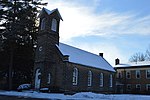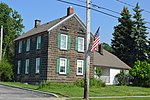Kent State University College of Podiatric Medicine
Kent State University College of Podiatric Medicine (KSUCPM), is the graduate podiatric medical school of Kent State University (KSU). As of 2022, it is the only fully public podiatry medical school in the U.S. The college is located in Independence, Ohio, south of Cleveland, approximately 30 miles (48 km) from the main KSU campus in Kent. Established in 1916, the college, formerly the Ohio College of Podiatric Medicine, was among the first in the nation to offer a program in podiatric medicine and surgery. The 122,000-square-foot (11,300 m2) facility operates as a regional KSU facility in podiatric medical education.The college, which was formerly a private graduate medical institution, has graduated over 7,000 podiatric physicians and surgeons throughout its rich history. It is a member of The American Association of Colleges of Podiatric Medicine (AACPM), and is accredited by the Council on Podiatric Medical Education (CPME). All graduates receive the degree Doctor of Podiatric Medicine (DPM).
Excerpt from the Wikipedia article Kent State University College of Podiatric Medicine (License: CC BY-SA 3.0, Authors).Kent State University College of Podiatric Medicine
Willow Freeway,
Geographical coordinates (GPS) Address Website External links Nearby Places Show on map
Geographical coordinates (GPS)
| Latitude | Longitude |
|---|---|
| N 41.400616 ° | E -81.648037 ° |
Address
Kent State University College of Podiatric Medicine
Willow Freeway
44131
Ohio, United States
Open on Google Maps





